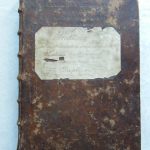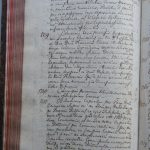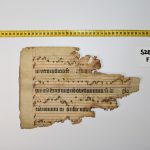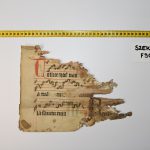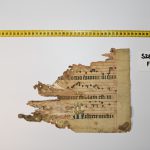The fragment is part of a group of 15th-century codex fragments, eight of which have been discovered and identified, belonging to a representative Esztergom Gradual. The musical notation and the chants of the leaves, in particular the O rex et apostole Stephane Alleluia in fragment F 920, which appears on the feast of King St Stephen, indicate the diocese of Esztergom as the destination of the manuscript. Some manuscript pieces of the codex are now preserved in distant collections in Budapest, Szombathely and Pécs; the eight leaves and parts of leaves have survived the last centuries as book and document covers. The music script of the fragments is particularly close to that of the two antiphoners (Ms. I. 3c-d) preserved in the Cathedral Library of Esztergom, whose provenance has recently been linked to Trnava. For more information on the mother codex, the host books and documents and the Trnava copying workshop in the background, see Gabriella Gilányi, From Fragment to Workshop: The Reconstruction of a 15th-century Graduale Strigoniense. Resonemus pariter. Studies in Medieval Music History 4, ed. Zsuzsa Czagány, Budapest.
Gabriella Gilányi


